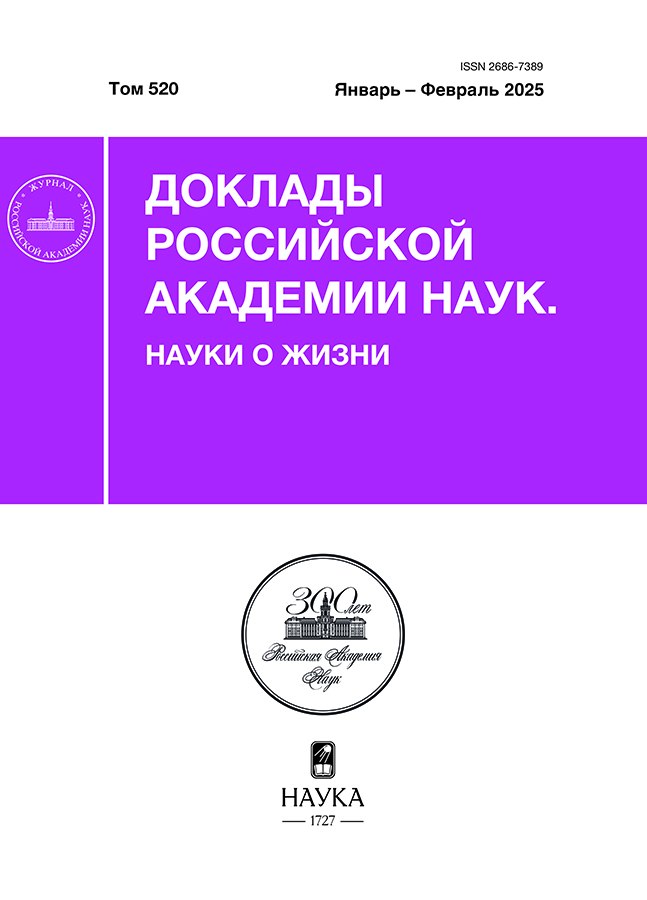The nudibranch Coryphella trophina (Bergh, 1890) (Gastropoda, Nudibranchia) uses twice stolen stinging capsules for its protection
- Autores: Krupitskaya N.R.1, Ekimova I.A.1, Malakhov V.V.1
-
Afiliações:
- Lomonosov Moscow State University
- Edição: Volume 520, Nº 1 (2025)
- Páginas: 5-9
- Seção: Articles
- URL: https://cijournal.ru/2686-7389/article/view/682013
- DOI: https://doi.org/10.31857/S2686738925010017
- EDN: https://elibrary.ru/tdqjuw
- ID: 682013
Citar
Texto integral
Resumo
Most nudibranchs feed on hydroid polyps and anemones, using stolen stinging capsules of eaten victims, kleptocnids, for protection. The nudibranch Coryphella trophina (Bergh, 1890) was found to eat other nudibranchs. This predator uses for protection stinging capsules which were stolen twice: once they were stolen by mollusks that fed on cnidarians, and the second time they were stolen by C. trophina itself that ate these mollusks.
Palavras-chave
Texto integral
Sobre autores
N. Krupitskaya
Lomonosov Moscow State University
Autor responsável pela correspondência
Email: nelly-karimova@yandex.ru
Rússia, Moscow
I. Ekimova
Lomonosov Moscow State University
Email: nelly-karimova@yandex.ru
Rússia, Moscow
V. Malakhov
Lomonosov Moscow State University
Email: nelly-karimova@yandex.ru
Academician of the RAS
Rússia, MoscowBibliografia
- Goodheart J.A., Bely A.E. Sequestration of nematocysts by divergent cnidarian predators: mechanism, function, and evolution // Invertebrate Biology. 2017. Vol. 136, No. 1, P. 75–91.
- Nikitenko E.D., Vortsepneva E.V. Spicule complex of three Onchidorididae species (Gastropoda: Doridina) from the White Sea // Invertebrate Zoology. 2020. Vol. 17, No. 1, P. 44–58.
- Ekimova I.A., Vorobyeva O.A., Mikhlina A.L., et al. Nematocyst sequestration within the family Fionidae (Gastropoda: Nudibranchia) considering ecological properties and evolution // Frontiers in Zoology. 2022. Vol. 19, No. 1, P. 29.
- Andersen R.J., Desjardine K., Woods K. Skin chemistry of nudibranchs from the West Coast of North America // Molluscs: From Chemo-ecological Study to Biotechnological Application. 2006. P. 277–301.
- Vorobyeva O.A., Malakhov V.V., Ekimova I.A. General and fine structure of Aeolidia papillosa cnidosacs (Gastropoda: Nudibranchia) //Journal of morphology. 2021. Vol. 282, No. 5, P. 754–768.
- Goodheart J.A., Bleidißel S., Schillo D., et al. Comparative morphology and evolution of the cnidosac in Cladobranchia (Gastropoda: Heterobranchia: Nudibranchia) //Frontiers in zoology. 2018. Vol. 15, No. 1, P. 1–18.
- Frick K.E. Nematocyst complements of nudibranchs in the genus Flabellina in the Gulf of Maine and the effect of diet manipulations on the cnidom of Flabellina verrucosa //Marine biology. 2005. Vol. 147. No. 6, P. 1313–1321.
- Greenwood P.G. Acquisition and use of nematocysts by cnidarian predators // Toxicon. 2009. Vol. 54, No. 1, P. 1065–1070.
- Roginskaya I.S. Coryphella tropina (Bergh) (Nudibranchia: Coryphellidae): feeding characteristics, synonymy, distribution // Feeding and bioenergetics of marine benthic invertebrates. Moscow, Institute of Oceanology of the USSR Academy of Sciences. 1990a. P. 47–57.
- Kavtaradze D.N., Valovaya M.A. Microtechnics. Rules, techniques, art, experiment // Moscow: Moscow University Press. 1993. P. 83.
- Ekimova I.A., Valdes A., Chichvarkhin A., et al. Diet-driven ecological radiation and allopatric speciation result in high species diversity in a temperate-cold water marine genus Dendronotus (Gastropoda: Nudibranchia) // Molecular Phylogenetics and Evolution. 2019. Vol. 141, No. 1, P. 106609.
- Ekimova I.A. A new species of the genus Coryphella (Gastropoda: Nudibranchia) from the Kuril Islands // Ruthenica, Russian Malacological Journal. 2022. Vol. 32, No. 1, P. 41–48.
- Östman C. A guideline to nematocyst nomenclature and classification, and some notes on the systematic value of nematocysts // Scientia Marina. 2000. Vol. 64, No. 1, P. 1–31.
Arquivos suplementares












